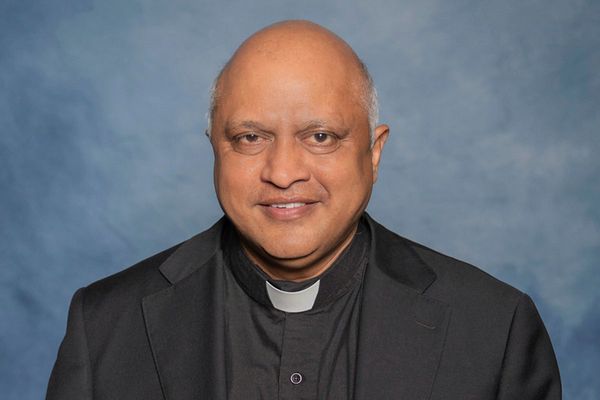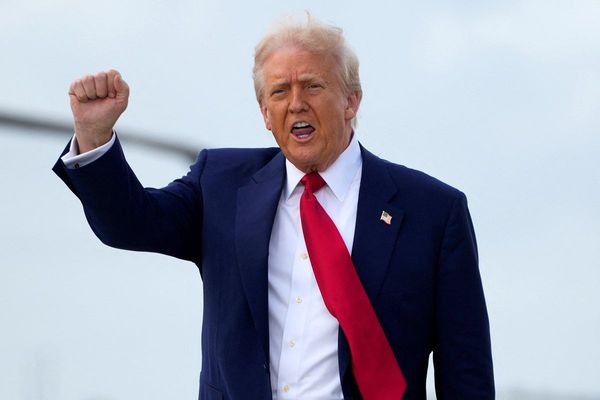
The “day after” the war between Israel and Hamas in Gaza may still be weeks or months away. But it will come. “When this crisis is over, there has to be a vision of what comes next,” said US president Joe Biden recently. “And in our view, it has to be a two-state solution.”
Against a backdrop of repeated cycles of violence and a military occupation lasting more than half a century, diplomats and analysts agree that lasting peace must follow the bloodiest fighting between Israelis and Palestinians for decades.
The two-state solution to the bitter conflict that has beset the region for almost a century – dividing the land between the Jordan River and the Mediterranean to carve out two independent, sovereign Israeli and Palestinian states existing side by side – has repeatedly been endorsed by world leaders.
But it has proved impossible for Israel and the Palestinians to reach an agreement. And, since talks brokered by John Kerry, then the US secretary of state, collapsed in 2014, and as Jewish settlements in the West Bank and East Jerusalem have proliferated, the consensus has been that the two-state solution is dead.
That view has been reinforced by opinion polls conducted shortly before Hamas’s deadly assault on Israeli citizens on 7 October. In September, a Pew Research Center survey found that only 35% of Israelis believed “a way can be found for Israel and an independent Palestinian state to coexist peacefully” – a decline of 15 percentage points since 2013.
And a Gallup poll found that just 24% of Palestinians living in the West Bank, Gaza and East Jerusalem supported a two-state solution, down from 59% in 2012. Young Palestinians were significantly less enthusiastic than their parents.
Can the two-state solution be revived? And, given the continuing war, regional tensions and settlers’ presence in what would be a Palestinian state, what might it look like?
“There are no other viable alternatives,” said Yossi Mekelberg, an associate fellow at the Chatham House thinktank. “The two-state solution is the least bad option to enable both Israelis and Palestinians to fulfil their political, civil and human rights.”
Yossi Beilin, a former Israeli peace negotiator, said: “It is the only solution – there is no realistic competition.”
But according to Aaron David Miller, an adviser on the Middle East to both Democratic and Republican administrations, “we have to distinguish between aspiration and reality”. He also warned: “The odds are very, very low. It’s essentially mission impossible.”
There are numerous obstacles in the way of a two-state solution, said Miller, not least that, in the immediate aftermath of the war, “we will be left with two deeply traumatised societies”.
Israel’s far-right government is viscerally opposed to the very idea of an independent Palestinian state, and its leader, Benjamin Netanyahu, has blocked progress on the issue for many years. Few expect him to survive as prime minister once the war is over, but there is no obvious pro-peace alternative in waiting.
The Palestinian Authority, led by Mahmoud Abbas, who has been largely absent from the stage in the past month, is ineffectual and lacks credibility among the public. Abbas is 87, and his four-year term as president has so far lasted nearly 19 years.
His only plausible successor, Marwan Barghouti, a senior leader of the Fatah political faction and a hero to many Palestinians, has been in an Israeli prison for 21 years, serving five life sentences for murder.
“What is lacking on both sides is leadership and political will. Both sides need to wake up after this horrible war and find new leadership,” said Mekelberg.
In the US, traditionally the driver of the Middle East peace process, Biden’s energies will inevitably be absorbed in fighting to retain his presidency over the next 12 months. If he loses to Donald Trump, the chances of reviving the two-state solution are close to nil.
Arab states, which would be crucial players in any process, may be restrained by fury among their populations at huge numbers of civilian deaths and a desperate humanitarian crisis in Gaza.
And even if Israel, the Palestinians, the US and Arab countries were determined to push ahead with a new peace process, the key challenges of any deal – borders and Israeli settlements in the West Bank and East Jerusalem, the future of Jerusalem, the “right of return” of Palestinian refugees and their descendants, security and Gaza – are still on the table.
Yet the broad principles of an agreement have been accepted for many years, said Hiba Husseini, a Palestinian lawyer based in Ramallah. “We know what a two-state solution looks like.”
She and Beilin have produced a proposal for an Israeli-Palestinian confederation – a “cohabitation of two sovereign states” – to address a number of the details.
Some Jewish settlements close to the pre-1967 “green line” – the armistice agreement line drawn in 1949 at the end of the Arab-Israeli war, and that followed Israel’s declaration of a state in 1948 – would be incorporated into Israel, with compensatory land swaps for a new Palestinian state; a principle broadly accepted by all parties.
Under the confederation plan, Israelis living in settlements deeper in the West Bank would be able to choose whether to relocate to homes inside Israel or stay where they are as Israeli citizens who are permanent residents of Palestine, agreeing to abide by the new state’s laws. A comparable number of Palestinian citizens would be able to move to Israel on the same terms.
The Old City of Jerusalem, home to important Muslim, Jewish and Christian holy sites, would become an “open city”, jointly administered by both nations. The open city would later be extended to encompass all Jewish and Muslim neighbourhoods of Jerusalem.
Gaza “cannot be left out” of a future Palestinian state, said Husseini. There will need to be land corridors between the West Bank and Gaza to allow access, but “there are already blueprints for those”.
Under those existing blueprints, a Palestinian state would have a police force but not an army or air force; and a symbolic number of descendants of Palestinian refugees would be permitted to return to live in Israel.
Public support
The principle of two states living side by side is “not only possible but critical”, said Husseini. “Before this war, there was a policy of ‘managing’ the conflict. It is now clear that it was a failed policy.”
Meanwhile, the one-state solution has gained traction, particularly among Palestinians and their supporters, in the absence of any moves towards a Palestinian state alongside an Israeli state.
The idea is essentially for one democratic state to exist on the land that is now Israel and the Palestinian territories, with equal votes for all. But it would inevitably mean the end of the Jewish state, as Jews became a minority within the single state’s population.
The numbers are already unequal. According to the Israeli bureau of statistics last year, Jews were 74% of the Israeli population, at 7 million people. The Arab population of Israel was 21%, or almost 2 million people. This year, the Palestinian Central Bureau of Statistics put the population of the West Bank and Gaza at almost 5.5 million people. When added to the 2 million Palestinians living in Israel, the total is nearly 7.5 million – more than Israel’s Jewish population. And the Palestinian population is significantly younger and therefore growing faster.
One state is unrealistic, said Yehuda Shaul, co-founder of Ofek, an independent Israeli thinktank dedicated to advancing a two-state solution. “Can you see a reality in which Israeli Jews give up their demographic hegemony within the green line, and decide to share the land and become a minority?”
But, he added: “Do I believe that two states are around the corner? No. Do I believe that the national project of the state of Israel is to prevent a two-state outcome? Yes.”
The Palestinian public would soon re-embrace a two-state solution, said Husseini. “Opinion on the street responds to what is happening. The mood reflects the moment, and now the moment is very dark. But if we have a horizon where we can see an endgame, the mood will change.”
The EU has said it is “ready to contribute to reviving a political process on the basis of the two-state solution”. It has called for a peace conference to be held within six months of the end of the war.
“Peace will not come by itself; it has to be built,” said Josep Borrell, the EU’s foreign policy chief. “The two-state solution remains the only viable one we know. And if we only have one solution, we must put all our political energy into achieving it.”
Most observers agree that fresh and courageous political leadership on both sides is needed. “Both sides will have to undergo reckonings,” said Miller. “What’s needed is a [Nelson] Mandela and a [FW] de Klerk, or somebody close. Leaders may yet emerge – look at [Ukrainian president Volodymyr] Zelenskiy.”
According to Beilin, with leadership and political will, a framework agreement could be reached relatively quickly: “Not weeks, but a year is possible,” he said. Public support would follow.
He added: “In the runup to Oslo [the historic 1993 peace accords], there was total opposition to any contact with the PLO [Palestine Liberation Organisation]. Once the agreement was signed, there was huge support.
“And I believe that, if an agreement could be reached after this war, there will also be big support.”







